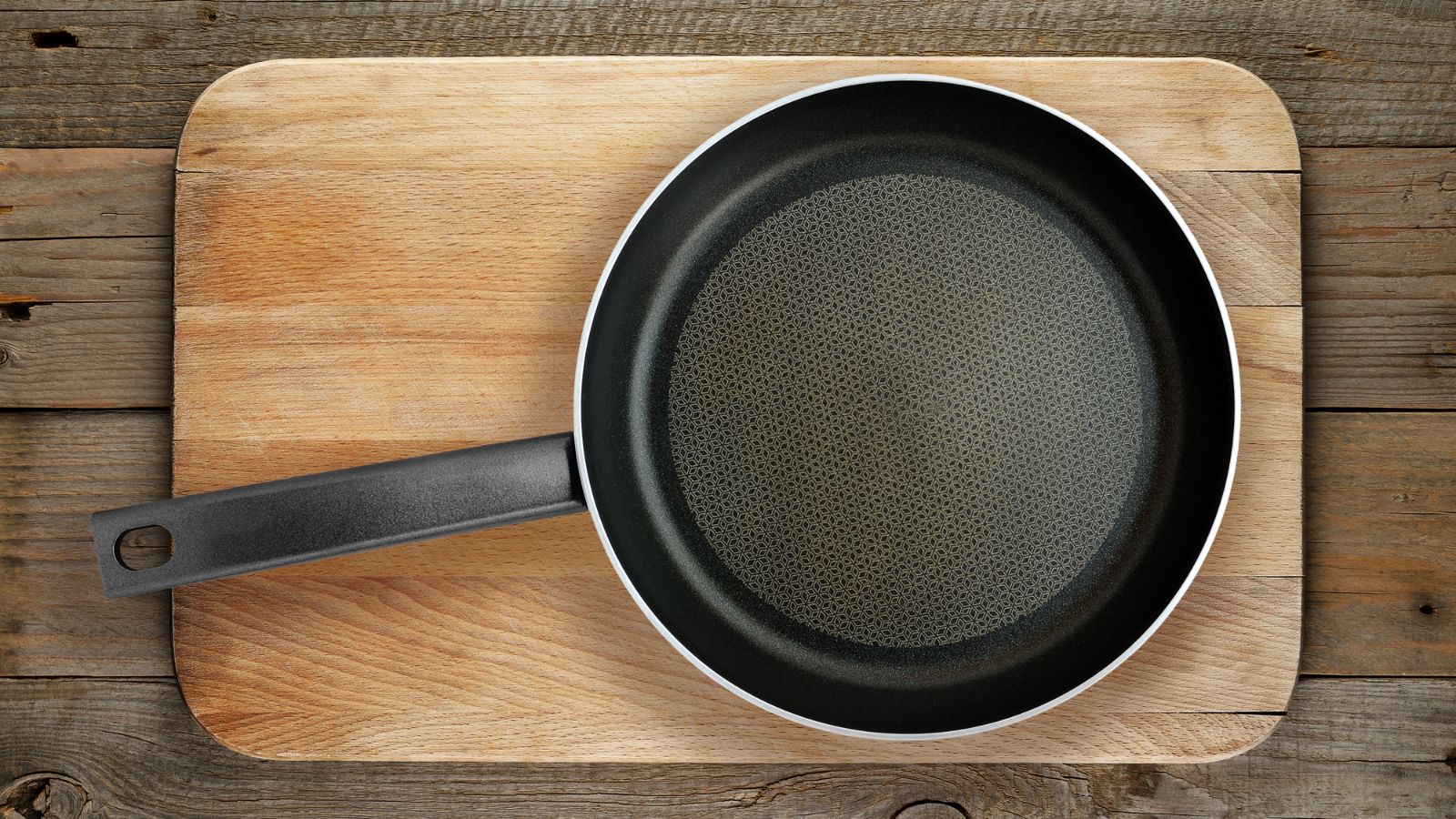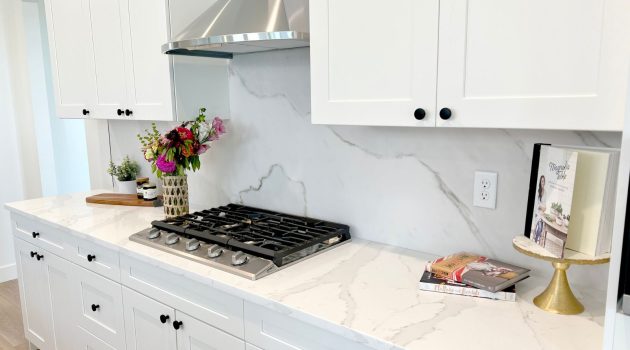If your new pan smells like chemicals, you’re likely experiencing a common issue with modern cookware.
This scent can often be attributed to residues left from the manufacturing process, such as oils and protective coatings applied to keep pans in pristine condition during storage and shipment.
When heated for the first time, these substances may emit a chemical-like odor, raising concerns about whether the cookware is safe to use or if it could impact the flavor of your food.
It is essential to properly clean your new pan before its first use to minimize any unpleasant odors. Manufacturers typically recommend washing cookware with warm soapy water.
However, if a strong scent persists, it may be due to the breakdown of non-stick coatings at high temperatures.
Non-stick pans are safe for cooking at recommended temperatures, but if overheated, they can release fumes that smell of chemicals, which can be a health hazard.
Always check the manufacturer’s guidelines to ensure you’re using your pan within the safe temperature range.
Understanding the source of the chemical smell can help you effectively address it and maintain the quality and safety of your cookware.
Proper initial cleaning and adherence to use and care instructions will help ensure that your new pan provides a safe and enjoyable cooking experience, free from any unwelcome odors.
1. Understanding Pan Chemical Smells
Causes of Chemical Odors
The smell you’re noticing in your new pan may be due to the factory coatings used to protect the pan during shipping and storage.
These coatings or residual manufacturing oils need to be thoroughly washed before the first use.
If your pan is coated with a non-stick surface like Teflon (known chemically as polytetrafluoroethylene or PTFE), overheating beyond recommended temperatures can cause the coating to break down, leading to a chemical smell.
- Overheating: Non-stick pans can emit fumes when used at high temperatures.
- Manufacturing Coatings: Chemical smells may be from protective coatings used during the shipping process.
- Residual Oils: Leftover oils from manufacturing can cause odors if not properly cleaned.
Safety Concerns: PTFE and PFOA
PTFE is generally safe for cooking when used within recommended temperature limits.
However, at high temperatures, it can decompose and release fumes capable of causing flu-like symptoms, a condition often referred to as “Teflon flu”.
As for PFOA (perfluorooctanoic acid), it was used in the production of PTFE but has been largely phased out due to health concerns, including a potential risk for cancer.
- PFOA Exposure: Historically used in making PTFE, PFOA has been linked to serious health issues.
- Risk to Birds: The fumes from overheating PTFE can be lethal to household birds, which have sensitive respiratory systems.
- Temperature Guidelines: To minimize risks, it’s crucial to follow the manufacturer’s temperature guidelines.
Remember to always ventilate your kitchen well when cooking, and follow the manufacturer’s instructions to ensure safety and longevity of your cookware.
2. Proper Usage and Care
Taking good care of your non-stick or cast-iron pans ensures they remain safe to use and free from unpleasant chemical smells.
Let’s look into how you can season your pan, manage cooking temperatures, and clean your cookware correctly.
Seasoning Your Pan
Non-stick Pans:
- Before first use, wash your pan with warm, soapy water.
- To season, lightly rub cooking oil over the surface and heat the pan over medium heat for 2-3 minutes.
Cast-iron Pans:
- Wash gently with water and dry thoroughly.
- Season by coating it with oil and baking it in a 375°F oven for 1 hour.
Cooking Temperature Guidelines
For non-stick pans:
- Stick to medium heat to prevent damage to the coating.
- High heat (above 500°F) can cause the release of toxic fumes.
For cast-iron pans:
- These can handle high heat but warm them gradually to avoid warping.
Cleaning Methods
Non-stick Pans:
- After cooking, let the pan cool.
- Use warm water and mild dish soap.
- For tougher residue, use a baking soda paste, apply gently, then rinse.
Cast-iron Pans:
- Clean while still warm using hot water; avoid dish soap to maintain seasoning.
- For odors, mix lemon juice with a bit of vinegar and scrub lightly; rinse well.
3. Choosing Quality Cookware
When selecting new cookware, it’s important to consider both the material and the product safety to ensure your pots and pans don’t emit harmful smells or chemicals during cooking.
Material Considerations
To avoid any unpleasant chemical odors, you first want to focus on the material of your cookware. Here’s what you should know:
- Cast-Iron: It’s a durable and naturally non-stick option when seasoned correctly. It also doesn’t release harmful fumes at high temperatures.
- Anodized Aluminum: This material is known for its lightweight and excellent heat conduction. When anodized, it has a hard, non-reactive surface that resists scratching and doesn’t release toxins.
- Silicone: As an adjunct to your cookware, silicone utensils complement non-stick pans well. They don’t scratch surfaces or produce fumes.
Choose pans with high-quality, safe non-stick coatings to avoid the risk of chemical smells. Additionally, ensure silicone accessories are food-grade and heat-resistant.
Reviewing Product Safety
To ensure the safety of your cookware:
- Read Reviews: Look for products with a high number of positive reviews focused on quality and durability.
- Certifications: Check for items that have safety certifications which may include statements about being free from harmful chemicals like PFOAs and PFAS.
- Manufacturer’s Guidelines: Always follow the manufacturer’s instructions for use and care to maintain the cookware’s integrity and safety.
Remember, investing a bit more in quality cookware pays off in the long run not only in durability but also in the health and safety of your cooking environment.
4. Cooking without the Chemical Aroma
When your new pan emits a chemical smell, it can be off-putting and worrisome. However, with the right oils and techniques, you can enjoy cooking your food without unwanted odors.
Alternative Cooking Oils and Techniques
Avoiding High Heat with Non-Stick Pans:
Non-stick pans are not meant for high-heat cooking. Using them on a low to medium setting can prevent the breakdown of the coating, which causes the chemical smell.
- Suitable Oils:
- Olive oil: With a moderate smoke point, it’s ideal for sautéing.
- Coconut oil: Works well for medium-heat cooking.
- Avocado oil: Has a high smoke point, perfect for searing meats without the risk of overheating your pan.
Cooking Sprays:
Be cautious with cooking sprays as they can leave a residue that results in a chemical odor over time. Instead, opt for a small amount of butter or traditional oils, which can provide a non-stick effect without the buildup.
Natural Remedies to Counteract Odors
Regular Cleaning Habits:
Residue from food particles can contribute to unpleasant smells. Cleaning your skillet promptly after use with warm, soapy water can prevent this issue.
- DIY Deodorizing Soak:
- Fill the pan with a solution of vinegar and water (1:1 ratio).
- Let it soak for an hour before rinsing thoroughly.
This natural method helps neutralize odors without damaging your pan’s surface.
Cooking with Garlic and Onions:
A well-known chef’s trick is to cook garlic or onions as the first ingredient.
These foods naturally neutralize odors and will fill your kitchen with a mouth-watering aroma, overshadowing any chemical smell from your pan.



